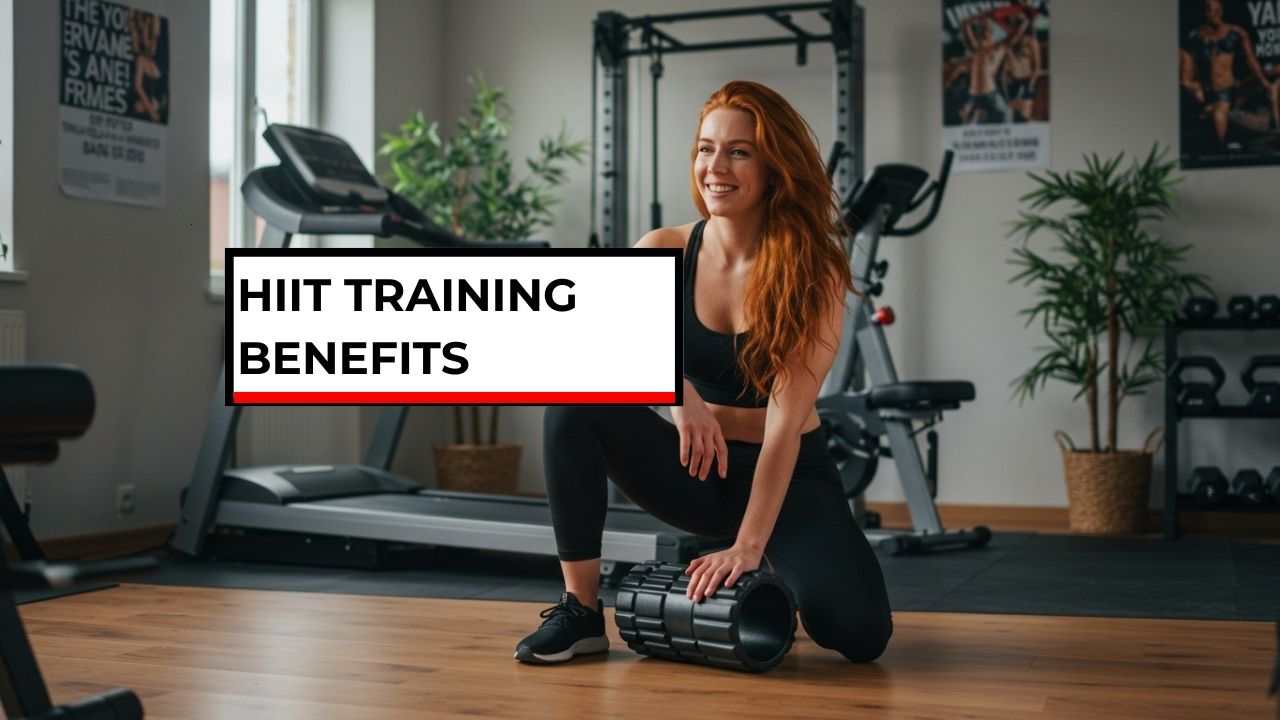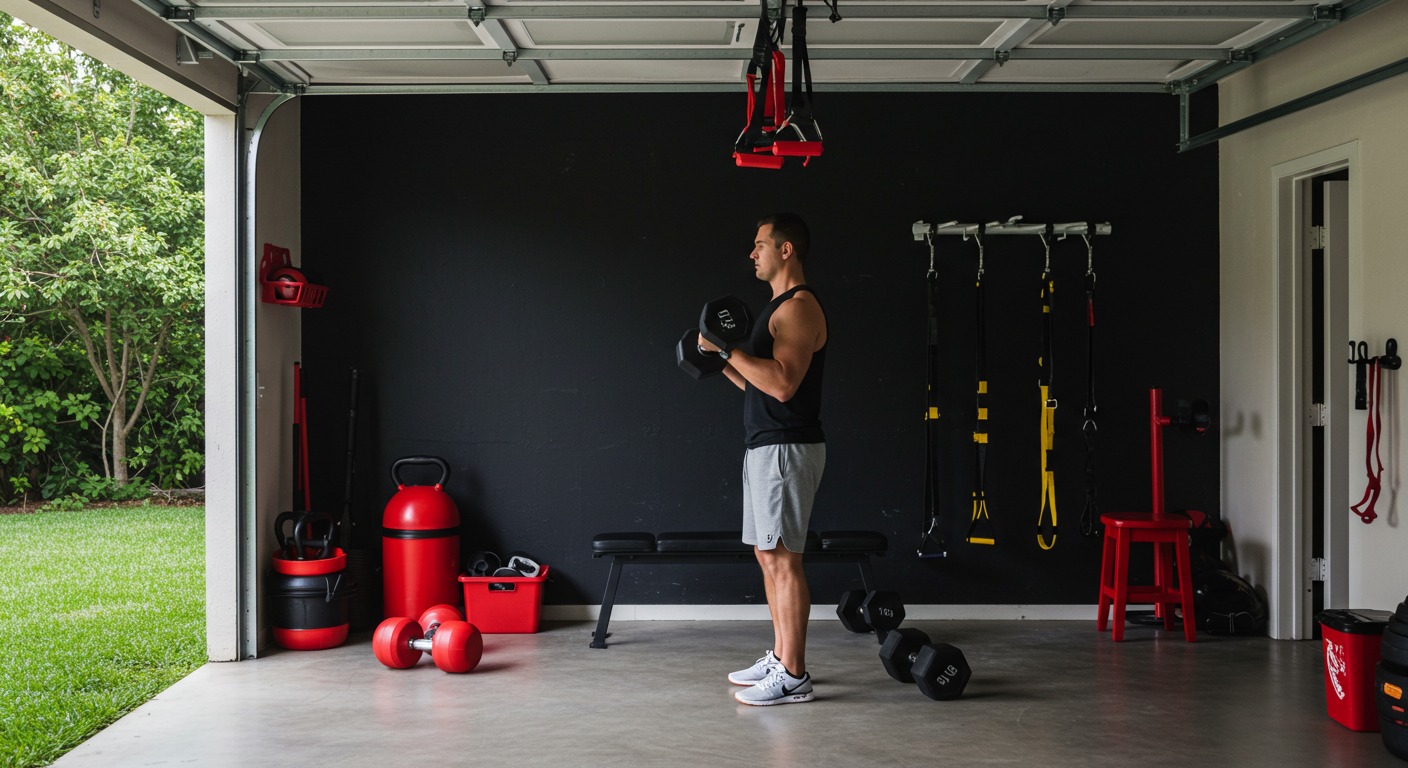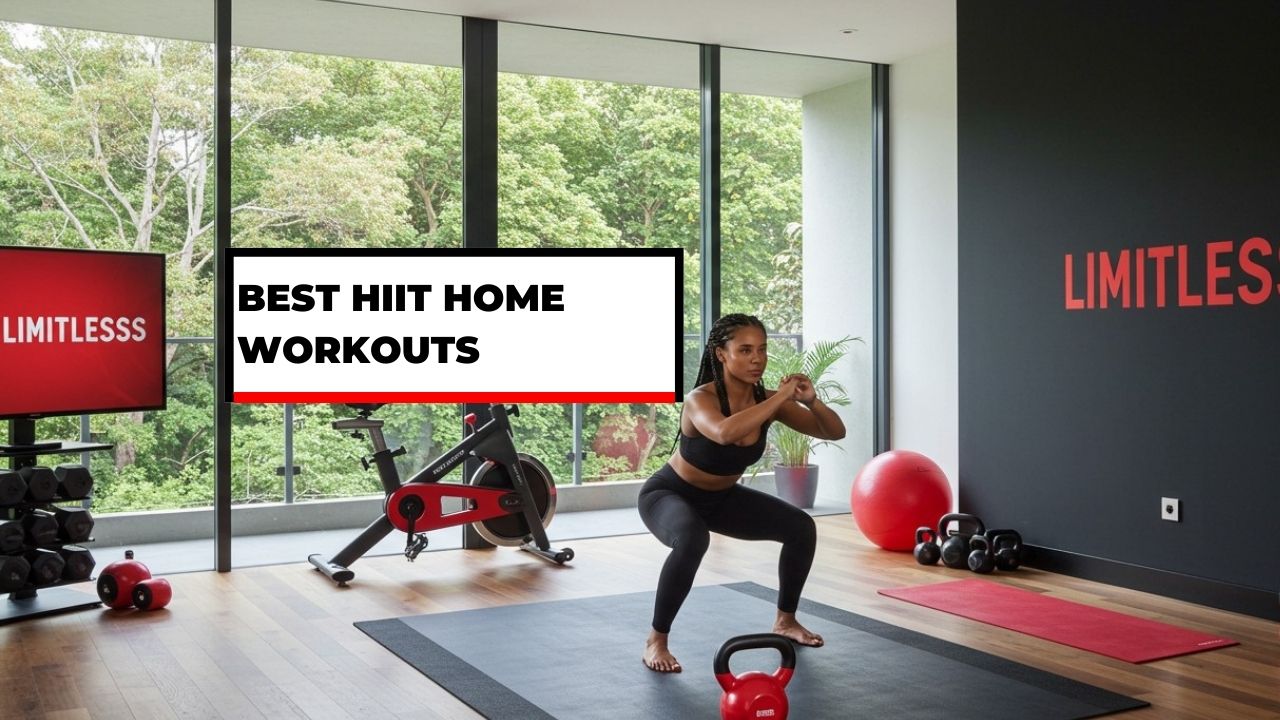Disclosure Information
This blog contains affiliate links. If you make a purchase through one of these links, our team may earn a commission at no extra cost to you. Learn more. Thanks for your support!
Finding time for exercise can be challenging in our busy lives. High-Intensity Interval Training (HIIT) offers a powerful solution. It delivers remarkable fitness results efficiently.
This guide explores the numerous advantages of incorporating HIIT into your routine. Discover why this workout style is so popular. Learn how it can transform your health and fitness levels.
What Exactly is High-Intensity Interval Training (HIIT)?
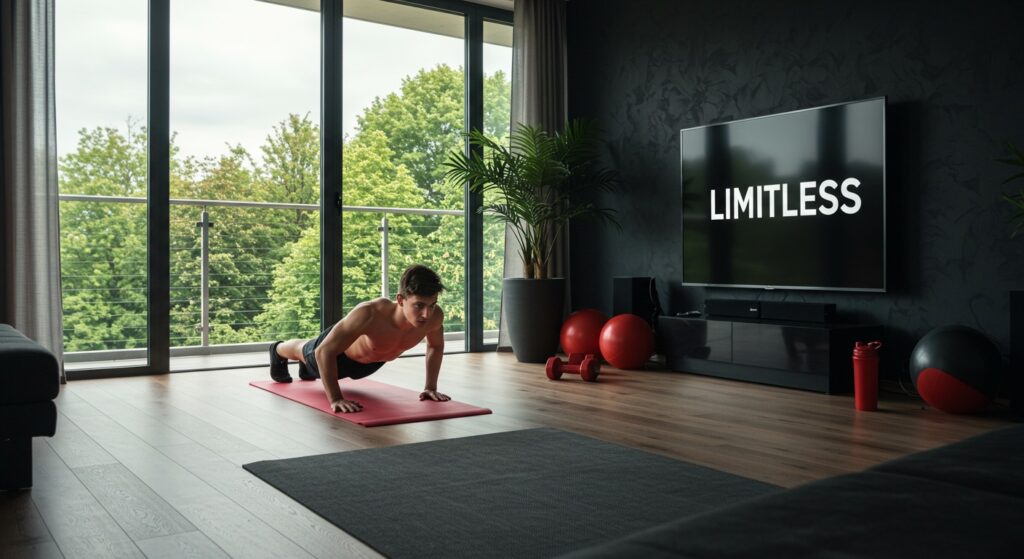
High-Intensity Interval Training involves short bursts of intense exercise. These are followed by brief recovery periods. Think maximum effort, then rest or low-intensity movement.
The work intervals push your heart rate significantly high. The recovery periods allow partial recovery before the next intense burst. This cycle is repeated several times within one session.
Unlike steady-state cardio (like jogging for 30 minutes straight), HIIT workouts are typically shorter. They often range from just 10 to 30 minutes. The key is the intensity during the work phases.
Why Choose HIIT? Unpacking the Key Benefits
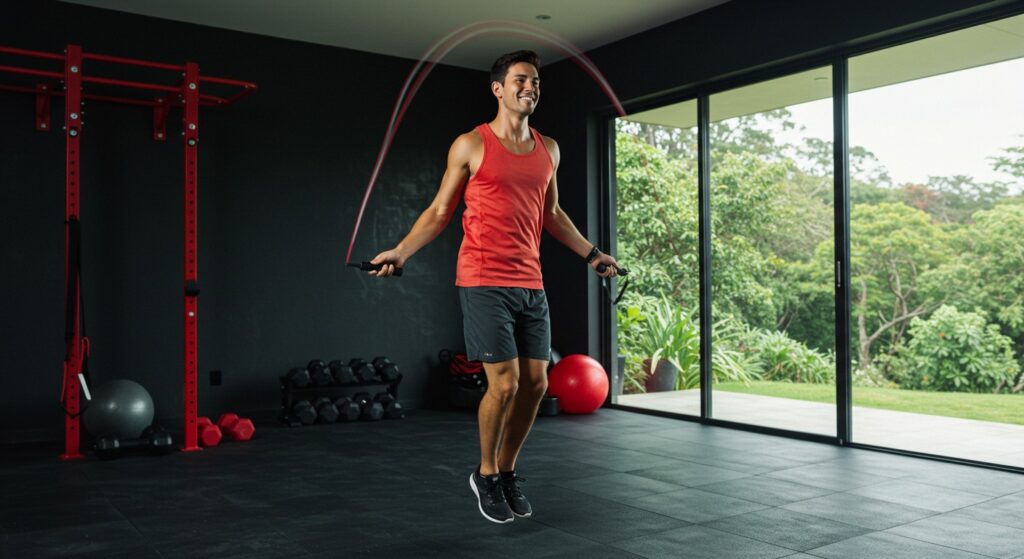
HIIT offers a compelling array of advantages. It impacts everything from your heart health to your metabolism. Let’s dive into the specifics.
Unbeatable Time Efficiency
Perhaps the most famous benefit is efficiency. HIIT packs a significant workout into a short timeframe. You can achieve substantial results in less time than traditional cardio.
This makes fitting exercise into a packed schedule much easier. Lack of time is a major barrier to regular physical activity for many adults. HIIT directly addresses this common problem.
Studies show lack of time is a primary reason people don’t exercise. HIIT offers a time-effective way to achieve fitness goals.
Boost Your Cardiovascular Health
The intense intervals significantly challenge your heart and lungs. This leads to powerful improvements in cardiovascular health. Your heart becomes stronger and more efficient over time.
HIIT can improve VO2 max, a key indicator of aerobic fitness. It enhances your body’s ability to use oxygen effectively. Better cardiovascular function reduces risks for heart disease.
Research suggests HIIT can significantly improve cardiorespiratory fitness. Gains can sometimes surpass those from moderate-intensity continuous training.
Accelerate Calorie Burn and Weight Loss
HIIT workouts burn a significant number of calories in a short period. The intensity drives up energy expenditure rapidly. But the benefits don’t stop when the workout ends.
HIIT triggers the “afterburn effect,” or EPOC. EPOC stands for Excess Post-exercise Oxygen Consumption. Your metabolism stays elevated for hours after the workout finishes.
This means you continue burning extra calories long after you’ve stopped exercising. This contributes effectively to weight loss and fat reduction goals. It’s a metabolic advantage over steady-state cardio.
Preserve or Even Build Muscle Mass
Unlike prolonged, steady-state cardio which can sometimes lead to muscle loss, HIIT can help preserve muscle. The high intensity can stimulate muscle fibers. This signals the body to maintain lean tissue.
Depending on the exercises used (like sprints or plyometrics), HIIT can even contribute to muscle building. This is especially true when compared to endurance cardio alone. Maintaining muscle is crucial for metabolism.
Improve Insulin Sensitivity
HIIT has shown positive effects on insulin sensitivity. This means your body becomes better at managing blood sugar levels. Improved sensitivity helps transport glucose into cells more effectively.
This can lower the risk of developing type 2 diabetes. It’s a significant benefit for overall metabolic health. Regular HIIT can contribute to better long-term blood sugar control.
Enhance Endurance and Stamina
While seemingly short, HIIT significantly boosts endurance. Pushing your limits during intense intervals improves overall stamina. You’ll likely find other physical activities become easier.
Both aerobic and anaerobic fitness can improve. This means better performance in activities requiring sustained effort. It also helps with short, powerful movements.
Versatility and Accessibility
HIIT workouts are incredibly versatile. You can perform them using various exercises. Think running, cycling, jumping jacks, burpees, or weightlifting.
Many HIIT routines require minimal or no equipment. Bodyweight exercises are highly effective. This makes HIIT accessible anywhere – at home, outdoors, or in a gym.
Boost Mood and Mental Health
Intense exercise like HIIT releases endorphins. These natural mood boosters can reduce stress and anxiety. Completing a challenging HIIT session also builds mental toughness.
The sense of accomplishment after pushing your limits is powerful. It can improve self-confidence and overall well-being. It’s a great way to break through mental barriers.
The Science Behind HIIT’s Effectiveness

How does HIIT achieve so much in so little time? The magic lies in pushing your body close to its limits. This triggers significant physiological adaptations.
The intense work intervals create an oxygen deficit. Your body must work hard after the exercise to restore itself. This is the EPOC or “afterburn” effect mentioned earlier.
EPOC requires energy (calories) to replenish oxygen stores. It also helps remove metabolic waste products. This sustained calorie burn is a key advantage for metabolism and fat loss.
Furthermore, the high intensity stimulates hormonal responses. Growth hormone release can be enhanced. This contributes to fat burning and muscle maintenance or muscle building.
Getting Started with HIIT Safely
Ready to try HIIT? It’s important to start correctly to avoid injury. Follow these key steps for a safe and effective beginning.
Consult Your Doctor
Before starting any new intense exercise program, talk to your doctor. This is especially important if you have pre-existing health conditions. Ensure HIIT is appropriate for you.
Prioritize Warm-Up and Cool-Down
Never skip your warm-up. Prepare your body with dynamic stretches and light cardio. Gradually increase your heart rate before the intense intervals begin.
A cool-down is equally important after your session. Use static stretching and light activity. This helps your heart rate return to normal gradually. It can also reduce muscle soreness.
Start Slowly and Gradually Increase Intensity
Don’t jump into extremely long or intense sessions immediately. Begin with shorter work intervals and longer rest periods. Focus on maintaining proper form throughout each exercise.
As your fitness improves, you can gradually increase work duration. You can also shorten rest periods or add more rounds. Listening to your body is crucial.
Choose Your Exercises Wisely
Select exercises you can perform with good form, even when fatigued. Bodyweight options are excellent starting points. Examples include high knees, jumping jacks, squats, and push-ups.
Consider structuring your workout simply at first. A common ratio is 1:1 work-to-rest. For example, 30 seconds of intense work followed by 30 seconds of rest.
Here are some sample structures:
| Structure Type | Work Interval | Rest Interval |
| Beginner | 20-30 seconds | 40-60 seconds |
| Intermediate | 30-45 seconds | 30-45 seconds |
| Advanced | 45-60 seconds | 15-30 seconds |
Note: Adjust based on your fitness level and the exercises chosen.
Frequency Matters: Don’t Overdo It
HIIT is demanding on the body. Avoid doing intense HIIT workouts every day, especially when starting. Allow adequate recovery time between sessions.
Aim for 2-3 HIIT sessions per week on non-consecutive days. Combine it with other forms of exercise like strength training or steady-state cardio. This creates a balanced fitness routine.
Potential Considerations and Risks

While highly beneficial, HIIT isn’t without potential risks if done improperly.
- Injury Risk: Performing high-impact exercises with poor form under fatigue increases injury risk. Master form at lower intensity first.
- Overtraining: Due to its intensity, doing too much HIIT too soon can lead to overtraining. Symptoms include persistent fatigue, decreased performance, and mood disturbances.
- Not for Everyone: Individuals with certain cardiovascular conditions or joint issues may need modifications or alternative exercise forms. Always prioritize safety and medical advice.
Listen to your body. Pain is a signal to stop or modify. Rest and recovery are just as important as the workout itself for progress.
Conclusion
The benefits of HIIT training are clear and compelling. It offers exceptional time efficiency for improving fitness. From enhanced cardiovascular health to accelerated calorie burn, the advantages are numerous.
HIIT boosts metabolism, helps manage weight loss, and can preserve muscle. Its versatility makes it accessible for many. Remember to start safely, prioritize form, and allow for recovery.
By incorporating HIIT thoughtfully into your routine, you unlock a powerful tool. Achieve your fitness goals faster and enjoy a stronger, healthier body. Embrace the challenge and reap the rewards.
Resources:

